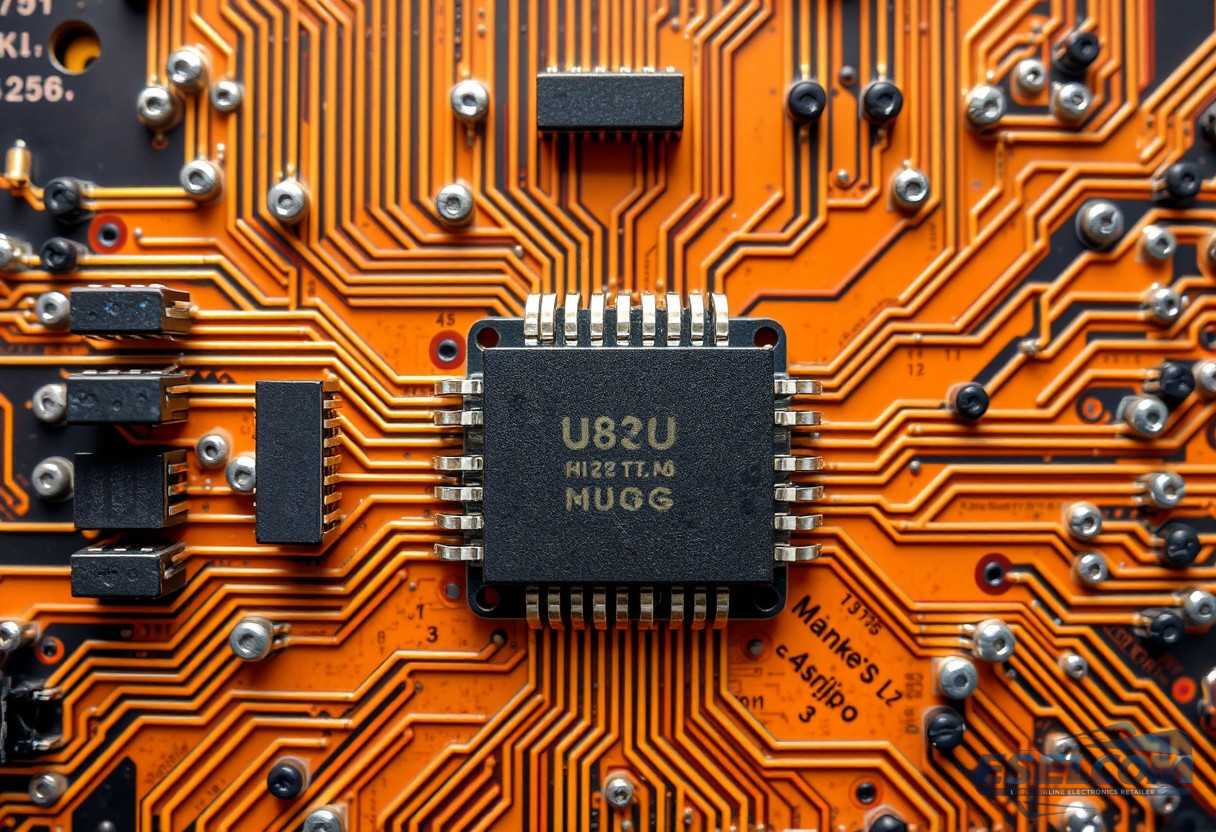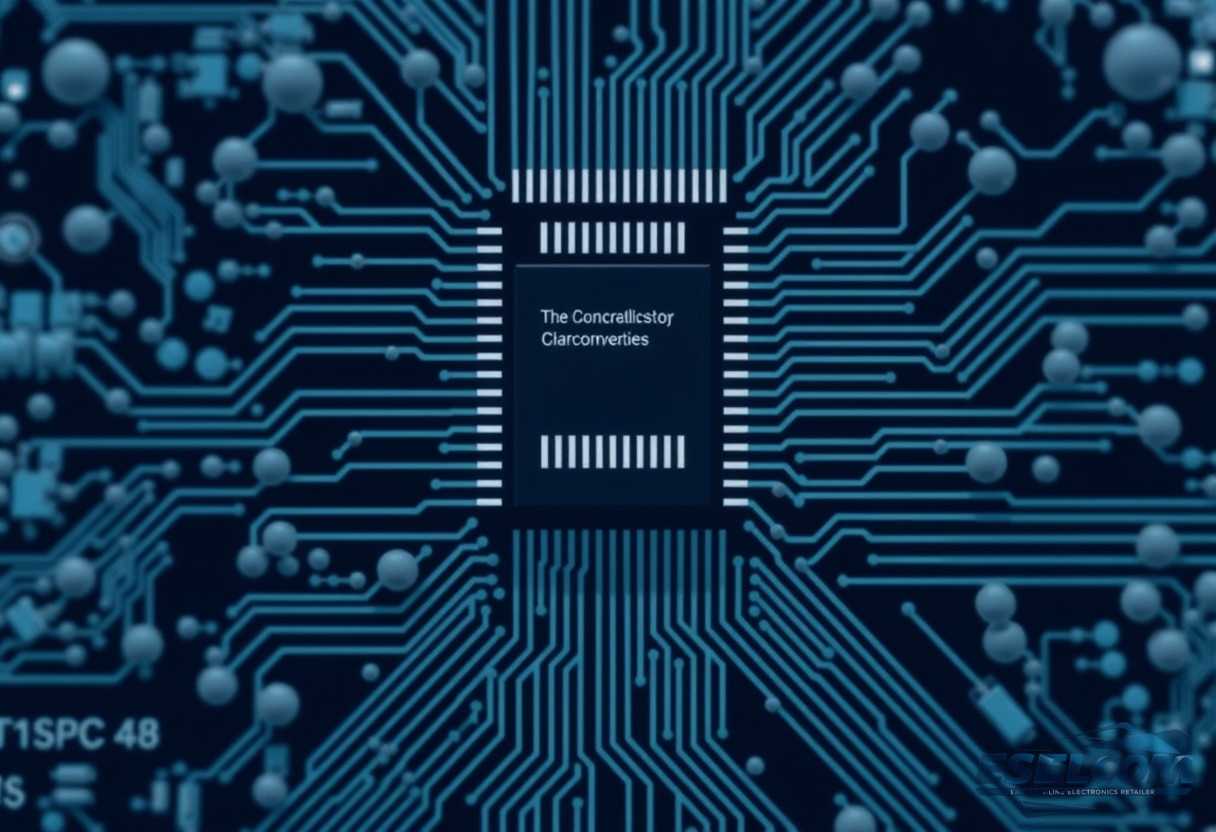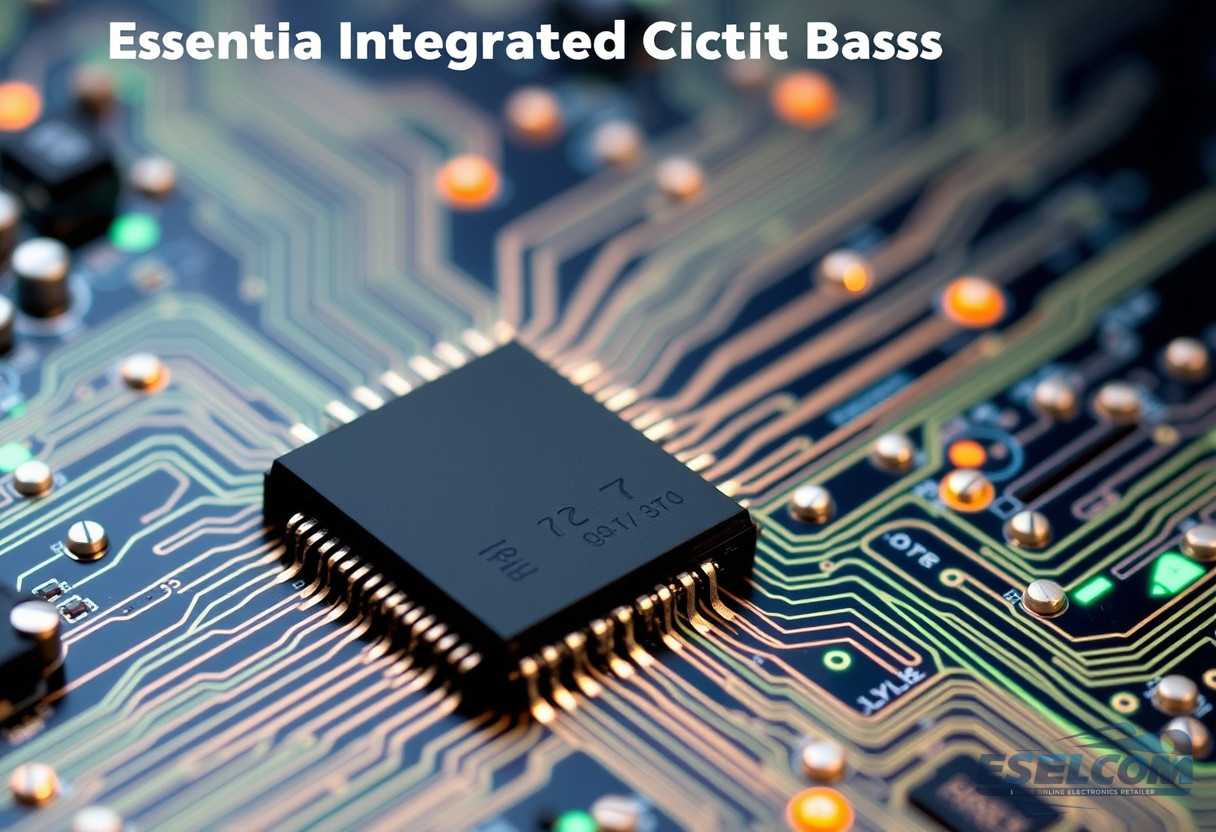Understanding Integrated Circuits: From Logic Gates to Microcontrollers
Integrated circuits (ICs) are the fundamental building blocks of modern electronic devices. They serve various functions, ranging from simple logic operations to complex microcontroller tasks. This comprehensive guide aims to explore integrated circuit basics, detailing their design, functionality, and applications. By covering everything from basic logic gates to sophisticated microcontrollers,
1. What is an Integrated Circuit?
An integrated circuit is a semiconductor device that combines multiple electronic components, such as transistors, capacitors, and resistors, onto a single chip. This miniaturization allows for greater efficiency, reduced costs, and improved performance in electronic systems. As a key element in today’s technology, integrated circuits are pivotal in devices ranging from smartphones to advanced computing systems.
2. The Evolution of Integrated Circuits
Since their inception in the late 1950s, the design and manufacturing techniques for integrated circuits have rapidly evolved. The following milestones highlight the progression of integrated circuits:
- 1958: Jack Kilby created the first integrated circuit, a simple design using germanium.
- 1960s: The invention of silicon-based ICs led to widespread use in consumer electronics.
- 1971: Intel introduced the first microprocessor, the 4004, revolutionizing computing.
- 1980s-1990s: The development of VLSI (Very Large Scale Integration) technology allowed for millions of transistors on a single chip.
- 2000s-2020s: Advancements in manufacturing techniques continue to push the limits of IC capabilities.
3. Logic Gates: The Building Blocks of Integrated Circuits
At the heart of integrated circuits lie logic gates. These fundamental components perform basic logical operations on one or more binary inputs to produce a single output. Understanding logic gates is crucial when exploring integrated circuit basics. The most common types of logic gates include:
- AND Gate: Outputs high (1) only if all inputs are high.
- OR Gate: Outputs high if at least one input is high.
- NOT Gate: Inverts the input signal.
- NAND Gate: Outputs low only if all inputs are high.
- XOR Gate: Outputs high if the number of high inputs is odd.
Logic gates are often represented using truth tables, which define the output for every possible input combination. These tables are essential for designing complex circuits and systems.

4. Combinational vs. Sequential Circuits
Integrated circuits can be classified into two fundamental categories: combinational circuits and sequential circuits. Understanding these distinctions is critical for grasping integrated circuit basics.
4.1 Combinational Circuits
Combinational circuits produce outputs based solely on the current inputs, with no memory elements involved. Examples of combinational logic include:
- Arithmetic Logic Units (ALU)
- Multiplexers
- Demultiplexers
- Encoders and Decoders
These circuits can be implemented using a combination of logic gates, and the design can be optimized for speed and resource usage.
4.2 Sequential Circuits
Sequential circuits, on the other hand, have memory elements that store information about past input states, allowing the output to depend on both current and past inputs. Common sequential circuit types include:
- Flip-Flops
- Registers
- Finite State Machines
These circuits are essential for applications requiring state retention, such as counters and digital memory systems.
5. Introduction to Microcontrollers
Microcontrollers represent a more advanced application of integrated circuits. They are compact computing devices designed to perform specific control functions within embedded systems. A typical microcontroller integrates several components, including:

- CPU (Central Processing Unit)
- Memory (RAM, ROM, EEPROM)
- I/O Ports
- Timers
- ADC (Analog to Digital Converter)
Microcontrollers are widely used in consumer products, automotive systems, medical devices, and industrial controls. They enable automation and smart functionalities, transforming traditional products into intelligent solutions.
6. The Architecture of Microcontrollers
Understanding the architecture of microcontrollers is vital for grasping how they operate. The architecture typically consists of the following components:
- Cores: The core processes instructions. Popular core architectures include ARM, AVR, and PIC.
- Memory: Microcontrollers include various memory types to store program code and data.
- I/O Ports: These ports allow communication with external devices, sensors, and actuators.
For example, the SIHB4N80E-GE3 microcontroller features a versatile architecture suitable for various applications, from simple control tasks to complex automation processes.
7. Applications of Integrated Circuits
Integrated circuits find applications in many fields, significantly impacting modern technology. Some prominent applications include:
- Consumer Electronics: Devices such as smartphones, tablets, and gaming consoles heavily rely on integrated circuits for functionality.
- Automotive Systems: ICs are integral to modern vehicle systems, including engine control units, infotainment, and advanced driver-assistance systems (ADAS).
- Industrial Automation: Integrated circuits are utilized in robotics, sensor systems, and programmable logic controllers (PLCs).
- Healthcare: Integrated circuits power medical devices, including diagnostic equipment and monitoring systems.

The growth of the Internet of Things (IoT) further demonstrates the importance of integrated circuits, as smart devices rely on these components for connectivity and data processing.
8. Selecting the Right Integrated Circuit
When integrating circuits into projects or products, selecting the appropriate IC is critical. Here are some factors to consider when choosing an integrated circuit:
- Functionality: Ensure the IC meets the specific requirements of the application.
- Processing Power: Assess the computational needs; select a microcontroller with sufficient processing speed.
- Power Consumption: Evaluate energy efficiency, especially for battery-operated devices.
- Cost: Balance the budget with performance needs.
For example, the 1879215-7 IC is designed for robust performance in various environments, making it suitable for demanding applications across industries.
9. Future Trends in Integrated Circuit Design
The future of integrated circuits is characterized by continuous innovation and evolving technologies. Key trends shaping the industry include:
- Miniaturization: Ongoing research focuses on reducing the size of ICs while enhancing performance.
- AI Integration: Incorporating machine learning capabilities directly into chips is a growing trend.
- 3D ICs: Increased use of three-dimensional stacking of components for better performance and heat dissipation.
- IoT Expansion: Development of specialized chips for IoT applications to enable smarter connectivity.
As technology advances, integrated circuit basics will continue to evolve, presenting new challenges and opportunities for designers and engineers.
10. Conclusion
Understanding integrated circuits is essential for anyone interested in electronics, engineering, or related fields. From basic logic gates to sophisticated microcontrollers, ICs serve as the backbone of modern technology. As this field continues to advance, professionals must stay informed of emerging technologies and trends to harness their potential effectively.
